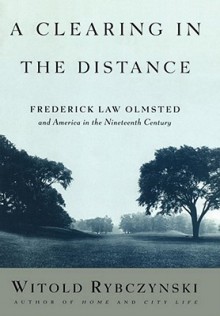A Clearing in the Distance: Frederick Law Olmsted and America in the 19th Century
The Barnes & Noble Review The name Frederick Law Olmsted, if it is recognizable to us at all, is usually connected with the design and construction of Central Park. A few readers may also be aware that Olmsted was also responsible for giving us Brooklyn's Prospect Park, Boston's Emerald Necklace,...
show more
The Barnes & Noble Review The name Frederick Law Olmsted, if it is recognizable to us at all, is usually connected with the design and construction of Central Park. A few readers may also be aware that Olmsted was also responsible for giving us Brooklyn's Prospect Park, Boston's Emerald Necklace, the Biltmore Estate in North Carolina, the Pinehurst Country Club in Atlanta, and the campus of Stanford University in California. But most will probably be surprised to learn that Olmsted drifted from one job to the next for most of his 20s. (Take heart, all you slackers!) Eventually, though, as Witold Rybczynski reminds us in his new book, A Clearing in the Distance: Frederick Law Olmsted and America in the Nineteenth Century, Olmsted would make up for lost time: In addition to his role as a pioneer in the field of landscape architecture, Olmsted was also a well-respected journalist and editor who published several books about his travels through the West and the pre-Civil War South and who would go on to cofound The Nation magazine. Olmsted saw himself as a man of letters, hobnobbing with the literary elite of New York (Washington Irving helped him secure the Central Park assignment), but in fact it was his journalistic curiosity and attention to details that made him so effective as an administrator and planner. Once, on a trip to England, he came across Birkenhead Park, outside of Liverpool. So impressed was he by that common that he sought out the park's superintendent and grilled him on its particulars: What kind of drainage system was used? How many trees were planted? Born in Hartford, Connecticut, to a successful merchant and his wife, little Fred was only three when his mother died. Shifted from one school to the next, from one tutor to another, young Olmsted received an intermittent, nontraditional education. When it was time for college, he felt so ill
show less






 13 years ago
13 years ago